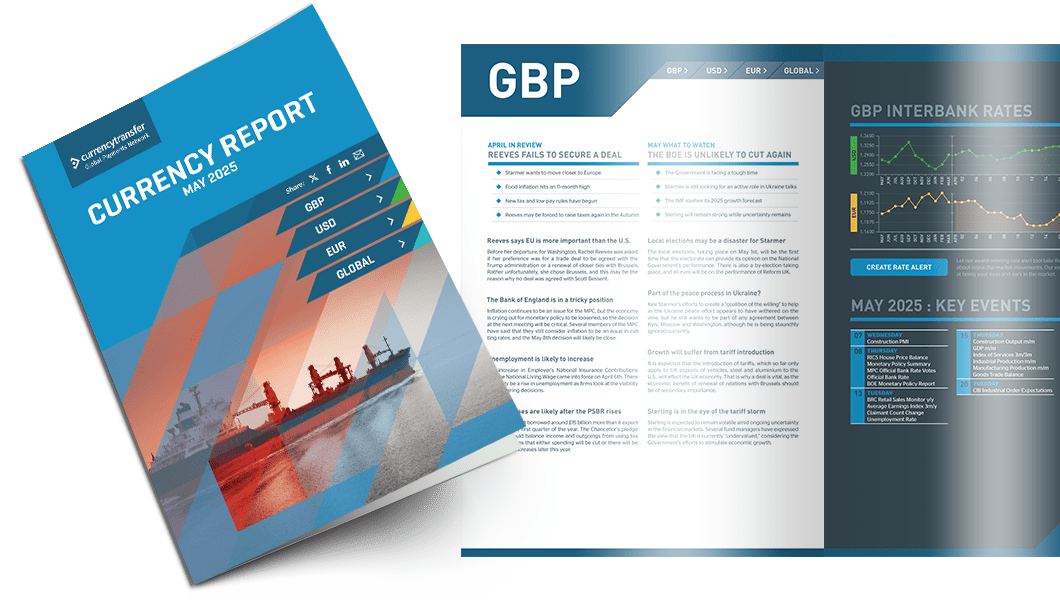
Highlights
- UK has the highest inflation and close to the slowest growth in G7
- Yellen sees inflation slowing as “certain sections” slows
- OECD predicts that the economy will grow by 0.9% in 2023
Interest rates expected to reach 5.25%, risking recession
Inflation is expected to average 6.9% this year, while growth is expected to be 0.3%, which is an upgrade on the earlier estimate where a contraction of 0.2% was predicted.
Although neither the OECD nor the IMF predict a recession this year, a lot will depend on the actions of the Bank of England.
Interest rates that have been increased at every meeting of the Monetary Policy Committee for the past eighteen months most likely stand on the cusp of becoming restrictive on demand and possibly contributing to a recession.
It is the base case of the OECD that the Bank will end its cycle of hikes following the meeting that is due to take place two weeks from today, or if they feel that core inflation is unlikely to fall, one further meeting.
The OECD believes that the UK faces a comparatively high rate of core inflation due to high labour costs as wages rise, and to headline inflation due to the country’s exposure to energy costs.
It is perhaps ironic that the only country expected to have a lower rate of growth than the UK is Germany, which is already suffering a recession.
There is a delicate balancing act that will need to be performed by Bank of England Governor, Andrew Bailey and his colleagues.
If they remain hawkish on inflation and raise rates more than a further fifty basis points in total, they face the prospect of being forced into an emergency cut as the country falls into a recession in the fourth quarter with the prospect of going into an election year with a contracting economy.
This will not be a “good look” for the Government, although as already mentioned, the OECD believes that the hikes may and as soon as this month.
The Prime Minister is due to meet the U.S. President this week, and he faces an uphill task to convince Joe Biden of the continued importance of the “special relationship”. It is well known that the U.S. believes that Brexit was an unwise decision from both an economic and security standpoint, although it is pleased that the UK is taking a leading role in the Russian invasion of Ukraine.
Sterling briefly touched the 1.25 level versus the dollar yesterday, but the market lacks confidence in the pound now leading to selling interest which saw it fall to a low of 1.2394 before recovering to close at 1.2437.

Read our latest currency report
Most impactful events planned this month and how they could impact your business
A pause then another hike in July possible
As a sop to those who feel that a pause would provide the economy with a timely boost, it may well be that rates will be left unchanged at the FOMC meeting that is due to take place next week, although Powell will be hard-pressed to find a reason for resuming hikes in July if inflation continues to moderate.
The U.S. is still not certain to avoid a recession later this year, although Powell appears to be less concerned about a mild contraction than the CEOs of major banks and industries.
Indeed, he may even feel that a technical recession may be favourable to continued high inflation.
It is difficult to imagine what more can be done through tightening monetary policy to slow the number of new jobs that are being created monthly.
It was predicted by just about every person with an opinion on the subject that the headline NFP number would be at, or very close to negative by now given the continuous rising of interest rates.
The Fed Funds rate is now considered to be in restrictive territory having reached a minimum of 5% following the last meeting of the FOMC.
Several members of the committee have spoken recently of their belief that the economy would receive help from a pause in rate hikes, although they are wary of supplying too definite a read on their intentions should the country face a spike in inflation.
Treasury Secretary Janet Yellen spoke yesterday of her belief that the Fed policy is working. She sees inflation slowing as some sectors of the economy slow, although it may take some time for the jobs market to “fall into line”.
The dollar index is in a state of flux currently with traders unsure of the Fed’s intentions and what the effect of a single pause would be.
Yesterday, initially retreated to a low of 103.65, but quickly recovered to close unchanged on the day at 104.12
Schnabel “doesn’t see full effect of hikes” until 2024
This would give the economy the “summer off” and allow some a degree of circumspection on whether hikes still have a material effect on inflation.
Isabel Schnabel, the German economist and Governing Council Member spoke of her belief that it will be 2024 before the full effect of the hikes that have taken place so far will be fully felt by the Eurozone economy, although the effect on certain economies has been greater than on others.
Schnabel who has been less than vocal about her views on continued hikes, spoke yesterday, shortly before the “blackout period” one week before the next meeting takes place.
In an interview with a Belgian newspaper, she was asked whether she believed that a pause would take place after two further hikes, she slipped into the standard “avoidance” posture of saying that it “depends on the data”.
Christine Lagarde clearly has no issue in pre-empting the data, feeling free to predict rate hikes for the past several months.
Schnabel spoke of her belief that an end to hikes would not require merely a peak being seen in inflation (which she in any event doesn’t believe has been seen yet), but a steady and reliable fall.
She agreed with Klaas Knot who believes that hikes should continue until inflation is on a path to return to the Central Bank’s target of 2%.
She stepped away from her usual hawkish stance to declare that every effort is being made to ensure that there is a balance struck between doing too much as well as too little.
The Euro is still enthralled by the possibility of the ECB “out-hawking” the Fed and appears poised to break higher as soon as that is confirmed.
Yesterday, the common currency rose to a high of 1.0739, but the perception of a “newly dovish” Isabel Schnabel pushed it back to a close of 1.0698.
Have a great day!

Exchange rate movements:
07 Jun - 08 Jun 2023
Click on a currency pair to set up a rate alert
Alan Hill
Alan has been involved in the FX market for more than 25 years and brings a wealth of experience to his content. His knowledge has been gained while trading through some of the most volatile periods of recent history. His commentary relies on an understanding of past events and how they will affect future market performance.